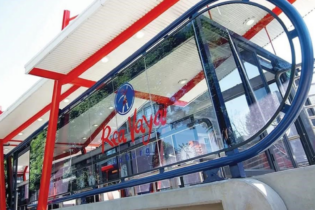Despite the presence of more sophisticated technologies, barcoding use is still widespread in the industrial, retail and warehousing space in South Africa. By Tristan Wiggill.
“Barcoding is still perceived to be an effective means of providing track and trace capabilities while eliminating human error in product identification and labelling,” says Sheldon Vermaak, solutions specialist at Cradle Technologies. Yet, while the barcoding eco-system and technology that enables its use in the country is long-established, there are still a number of, especially medium-sized, businesses that have not yet adopted this simplistic, effective form of product identification. This means there is ample room for suppliers, be they in the hardware or software space. Most barcode reading equipment used in South Africa today is supplied by North American companies, meaning that local pricing has come under significant pressure over the last two years. Even so, barcoding and its related equipment are still more cost-effective than fancier alternatives like Radio Frequency Identification Technology (RFID). “While RFID was envisioned to replace barcoding ten years ago, this is still not the case today, primarily because RFID technology is still too impractical, too costly and would have to be fitted at manufacturing level to really work,” says Aslam Peerbacus, senior channel account manager at Zebra Technologies. “The South African labelling market is not yet mature enough for RFID. Yes, we have noticed a slight shift towards RFID requests in 2015, with more interest expressed by our resellers, but this is not significant enough to change the usage landscape. There has been far greater adoption of handheld barcode scanners and readers and this will continue in the short-term,” he adds.Most companies wanting to identify products have a set budget and have made a 10 to 15-year investment and so they stick to normal barcoding. “RFID is currently better suited to the retail environment, where it is used to prevent stock theft. At the moment, the split between RFID and barcoding is about 90/10 in favour of barcoding.”
“The bigger battle at the moment is happening in the iOS space and the advent of the Internet of Things (IoT). Competition is fierce between Android and Windows platforms,” he says. Peerbacus says many companies are looking at their IoT strategies, which are likely to develop significantly in the next two years or so. “Most companies are adopting the BYOD (bring your own device) philosophy, with added printing technologies. The industry is developing solutions that have the ability to receive and handle data from multiple sources.”Barcoding has evolved from simple 1D scanning to 2D technology. The latter is advantageous in that it can read barcodes that have been torn. These scanners can also interpret 1D barcodes while 1D systems are confined to reading 1D barcodes only. The 2D barcode scanners can also be used to identify the information on driver’s licences, whereas 1D systems cannot. While the majority of local companies have moved towards 2D scanning technology, it does require a fairly substantial investment and careful consideration is required. Printed barcoding has found its place in a number of industries. It is trustworthy, re-usable and recyclable, simplistic and can be produced at very low cost. Tagging and tracking of higher value items can be done through electronic barcoding if so required, and so barcoding, in general, has a long lifespan ahead of it.







